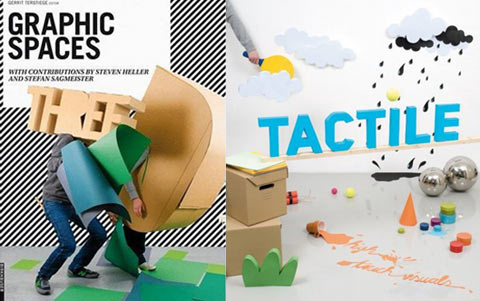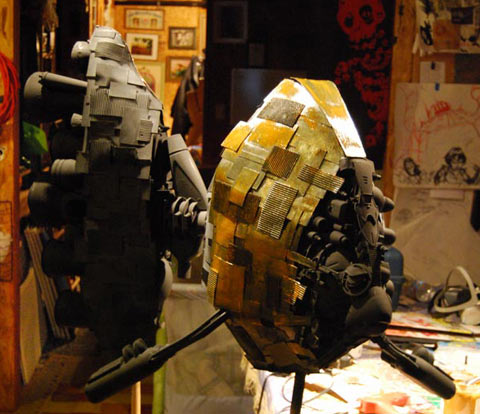

Animation Trends: 3-D Papercraft/Cut-out Animation

Recently three-dimensional paper sculpture/cut-out/origami has exploded as a major trend across multiple disciplines including animation, illustration and design. In an animation context, the factor that distinguishes this trend from traditional stop-motion is that the artist builds their own models/sets out of paper and other household materials. Two new books have been published documenting the movement in primarily non-animation media: Three-D: Graphic Spaces (Amazon link or book review) and Tactile: High Touch Visuals (Amazon link or book review ). One of those books even has Steven Heller’s name on the cover, a sure sign of fad status in the design world (seemingly the only design trend Heller hasn’t ‘discovered’ yet is our little world of animation).
In animation, one of the first major contemporary examples of paper sculpture was Virgil Widrich’s Fast Film from 2003. It remains a mighty impressive piece of work:
Another widely seen example of three-dimensional paper animation was Jamie Caliri’s “Dragon” spot for United Airlines which aired during the 2006 Super Bowl:
Caliri’s paper sculpture work is more mainstream than ever with his direction of the end titles for Madagascar: Escape 2 Africa. The art director of the Madagascar titles was Megan Brain, whose paper sculpture animation has also been seen in segments of Nick Jr.’s Yo Gabba Gabba! and Cartoon Network’s Class of 3000.
Animation artists all over seem to be enjoying creating paper sculptures. Last month Jon Klassen and his brother created an iceberg sculpture loosely based on Jon’s illustration concepts for this Royal Bank of Canada commercial.

Animation industry veteran Joe Orrantia is currently in the process of building an awesome-looking three-dimensional spaceship for one of his projects. He’s using PVC pipes, foam core, cups, and cereal boxes, while documenting the making of it on his blog.

It would be an oversimplification to label the emergence of three-dimensional paper sculpture as a mere backlash to the mathematically precise aesthetic of CGI or the longing for a simpler more tactile art. At least in the animation world, a lot of artists are using digital technology to aid their three-dimensional animation projects. For example, The Seed, a sublime piece of work by Johnny Kelly, would have been much more difficult to create without the aid of computers. The ‘making of’ video below hints at how the production incorporated digital technology alongside paper and scissors:
And then there’s the wildly inventive My Paper Mind by recent Pratt grad Javan Ivey:
The film is entirely made of cut-paper imagery but Javan shows on the film’s “making of” page that he used computer animation tests to make sure it would look right. “Computers are dirty cheaters… don’t we love it,” he writes on his website. So true.
Before anybody gets too excited about having discovered the next big thing, it would be wise to give this trend a bit of historical context by pointing out that Bill Justice, X. Atencio and T. Hee were doing paper sculpture animation at Disney in the early-1960s in films like A Symposium On Popular Songs (1962)…
and the opening titiles for The Misadventures of Merlin Jones (1964)…
Then, of course, there’s Russian animator Yuri Norstein whose dimensional work with paper in a film like Tale of Tales (1979) seems to come from another planet entirely:

.png)